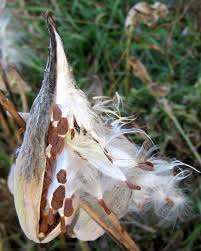Submitted by Faye Mahaffey
OSUE Brown County Master Gardener Volunteer
Can you believe it’s almost November? I seem to sound like a “broken record” each month, complaining that the days just flew by!
The rain and wind continue to knock down the leaves and now the Cottonwood leaves are creating a heavy mat on the grass. Those leaves are the toughest to deal with as far as I am concerned! And now walking down by the creek has become quite tricky because of all the black walnuts on the ground!
November is a great time to plant milkweed seeds according to Tony Gomez (monarchbutterflygarden.net). It’s too warm for the ground to be frozen, but too cold for seeds to sprout before winter sets in. Remember that perennial milkweed seeds need cold stratification, so why not let winter take care of that naturally! Exposing seeds to cool temperatures before the warmer temps of spring will cause them to break their dormancy, coaxing out your new spring seedlings.
The 10 simple steps to fall planning milkweed seeds include:
- Put your seeds into a small bowl and bring out to the planting area.
- Clear away any mulch or rocks from the area which could potentially block the growth of a small seedling.
- Water the area thoroughly and let it saturate the soil.
- Put on garden gloves and stick your index finger in the dirt up to your first knuckle.
- Repeat this process for each seed you are planting.
- Place a seed in each hole.
- Cover the seeds with the already-moist soil.
- Mark your seed area with sturdy plant labels.
- Do you have squirrels? You might want to consider putting down chicken wire to deter squirrels or other pesky critters from digging up your new milkweed patch.
- Relax for the winter!
I am still hoping to get some small trees planted before the ground freezes, but I might have to do it in the rain! We all complained about the hot humid weather and how it kept us from working in our gardens. Now that the cooler weather is here, I would love for it to stop raining long enough for me to finish my October “to-do list”. How about you?
Don’t forget to mark your calendar for the garden seminar on Thursday, November 15at the Mt. Orab campus of Southern State Community College. Doug Dyer, OSUE Brown County Master Gardener Volunteer, will talk about Poison Hemlock and other invasive weeds. Remember that all seminars are free and open to the public and are held in Room 208 from 7:00 p.m. to 8:00 p.m.
The wind is howling, and the leaves are blowing! It’s a great day to stay inside and plan next year’s gardens!

